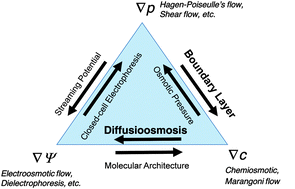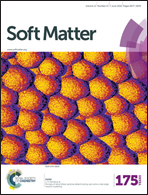Origins of concentration gradients for diffusiophoresis†
Abstract
Fluid transport that is driven by gradients of pressure, gravity, or electro-magnetic potential is well-known and studied in many fields. A subtler type of transport, called diffusiophoresis, occurs in a gradient of chemical concentration, either electrolyte or non-electrolyte. Diffusiophoresis works by driving a slip velocity at the fluid–solid interface. Although the mechanism is well-known, the diffusiophoresis mechanism is often considered to be an esoteric laboratory phenomenon. However, in this article we show that concentration gradients can develop in a surprisingly wide variety of physical phenomena – imposed gradients, asymmetric reactions, dissolution, crystallization, evaporation, mixing, sedimentation, and others – so that diffusiophoresis is in fact a very common transport mechanism, in both natural and artificial systems. We anticipate that in georeservoir extractions, physiological systems, drying operations, laboratory and industrial separations, crystallization operations, membrane processes, and many other situations, diffusiophoresis is already occurring – often without being recognized – and that opportunities exist for designing this transport to great advantage.


 Please wait while we load your content...
Please wait while we load your content...